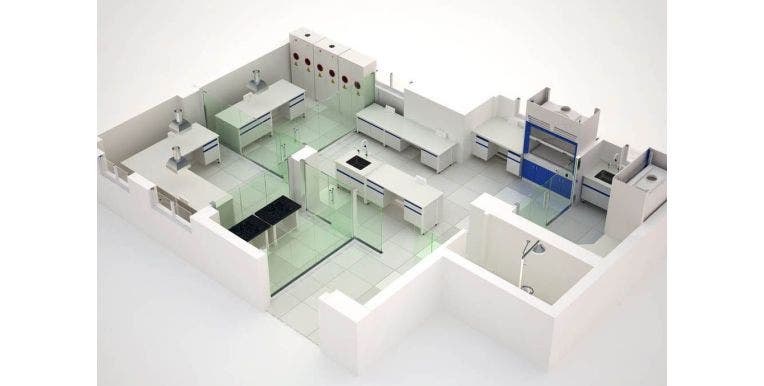7 Ways to Ensure a Successful Laboratory Relocation Plan
A well-organized laboratory relocation plan makes sure that lab instruments, samples, and scientific tools will move safely and efficiently. Moreover, it ensures that the newly established laboratory adheres to all necessary compliance standards and swiftly reaches its full productivity potential.
What Challenges Are Faced During The Laboratory Relocation Plan?
During a laboratory relocation plan, challenges may include ensuring the safe and proper handling of delicate equipment, minimizing downtime to avoid disruptions in research or testing activities, coordinating with various stakeholders, complying with regulatory requirements, and adhering to budget constraints. Effective planning and communication are crucial to overcoming these challenges.
Whether you are currently preparing for a move or considering it in the future, here are seven valuable recommendations to effectively handle risk during your laboratory relocation, ensuring a seamless transition.
1. Pre-Planning For laboratory Relocation Plan
The foundation of a successful laboratory relocation lies in comprehensive pre-planning and assessment. Begin by assembling a dedicated relocation team that includes representatives from various departments involved in the move. Conduct a thorough inventory of all equipment and materials to be relocated, identifying critical items that require special handling or specific environmental conditions.
2. Create a Detailed Timeline
Developing a well-structured timeline is essential for arranging a successful laboratory relocation. Set clear milestones and deadlines for each phase of the move, accounting for potential events. By establishing a detailed schedule, you can keep everyone involved on track and ensure a smooth transition without unnecessary setbacks.
3. Implement a Safety Plan
Safety should always be a top priority during a laboratory relocation process. Develop a comprehensive safety plan that outlines the procedures for handling hazardous materials, dealing with emergency situations, and ensuring the well-being of your staff throughout the process. Regular safety drills and training sessions can enhance preparedness and minimize potential risks.
4. Secure Data and Information
Back up all critical data and information before the relocation. Use secure data storage and transfer methods to safeguard sensitive research data and avoid any loss or compromise during the move.
5. Perform Equipment Testing and Calibration
Conduct pre and post-move testing and calibration of scientific equipment to ensure it functions optimally in the new laboratory space. Regular maintenance and testing will contribute to the smooth resumption of research activities.
6. Properly Label and Document
Accurately label all equipment, samples, and materials to facilitate smooth handling and unpacking at the new location. Maintain comprehensive documentation, including inventories, packing lists, and any required certificates to streamline the relocation process.
7. Post-Move Follow-Up and Support
Even after the relocation is complete, continue to provide support and assistance to your team as they settle into the new laboratory space. Address any lingering issues and collect feedback from employees to identify areas for improvement in future relocations.
By following these seven effective strategies, you can establish a seamless laboratory relocation plan that mitigates potential risks and ensures a successful transition. Early planning, engaging professional relocation services, prioritizing safety, and complying with regulations will set the stage for a smooth move.
Effective communication, proper documentation, and post-relocation support will further contribute to a successful laboratory relocation, allowing your team to focus on research and innovation in the new workspace.
Laboratory Moving Checklist
The Laboratory Moving Checklist is a comprehensive tool designed to ensure a smooth and successful laboratory relocation plan. It includes a series of essential tasks and considerations that need to be addressed throughout the relocation process. Here is a detailed checklist to guide you through the laboratory moving process.
- Initiate the relocation planning process well in advance.
- Engage Professional Laboratory Relocation Services
- Develop a comprehensive safety plan for the move
- Coordinate with relevant compliance authorities to obtain necessary permits and approvals.
- Securely transfer sensitive data during the move
- Perform pre and post-move testing and calibration of scientific lab equipment.
- Laboratory Clean-up by returning reagent bottles to their designated shelves
- Inform laboratory security that the lab is empty.
What Things Do You Need To Do Before You Leave The Lab?
The following safety measures must be followed before the laboratory relocation process:
- Turn off all gas lines.
- Shut off water points to avoid any potential leaks or overflows.
- Switch off vacuum and compressed air lines to prevent unnecessary usage.
- Ensure no heating devices like hot plates or rotary evaporators are left on.
- Turn off all instruments except those with programmable auto-sampler sample introduction systems, like chromatographs.
- Return reagent bottles to their designated shelves and keep workbenches clutter-free.
- Clean the weighing balance bench and chamber, and close the chamber protection shields.
- Cap all bottles, especially those containing acids or corrosive materials.
- Clear the aisles and passages, ensuring there are no obstructions.
- Check for any spillages on workbenches or the lab floor and clean them up.
- Remove and store all laboratory protective clothing and safety gear inside the lab before leaving, such as lab coats, gloves, and safety goggles.
- Turn off lights, air conditioners, and other electrical facilities to conserve energy.
- Don't forget to sign the laboratory register and note the time you leave the lab. This information can be valuable in the event of any future investigations.
- If there is an electronic entry and exit system, swipe your card before leaving.
- Lastly, ensure that the main exit gate is locked, and inform laboratory security that the lab is empty.
Following these comprehensive guidelines will safeguard valuable equipment, samples, and research data, ensuring a successful laboratory relocation and enabling the team to continue their scientific research with confidence in the new workspace.
Remember, a well-executed relocation plan is the key to a successful and efficient laboratory move.
Moreover, Westlab Canada is the leading scientific supply store to buy lab instruments for your scientific work. Go and check our website for accurate and latest scientific tools.


